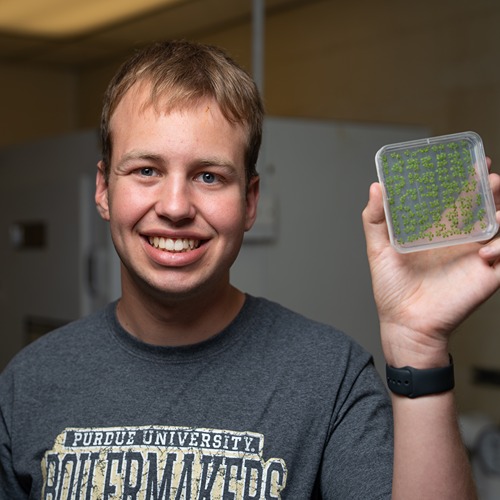Purdue experts provide spring climate outlook
Meteorological spring technically begins on the first day of March, with astronomical spring following on March 19 or 20, depending on the year. This year, Indiana started to see 70 degree temperatures, however briefly, around March 13, with a return to higher temperatures at the end of the month.
April, May and June constitute the traditional planting season for Indiana’s field crops, with potential for a bit of July planting if the first three months do not cooperate. Over this time period, a weak El Niño is predicted to continue. Looking at average conditions for prior El Niño months via the Useful to Usable Climate Patterns Viewer tool, this information unfortunately sends no clear signal about spring temperatures. For precipitation, the tool shows a mild drying for Central Indiana in May spreading through most parts of the state for June.
Meanwhile, the Climate Prediction Center is providing a three-month outlook showing healthy chances for above-average precipitation over April, May, and June, with most of the state also slightly predicted for above average temperatures.
Why the discrepancy?
One reason is the weakness of this El Niño. Temperatures are hanging out in the Pacific just above the 0.5 degree Celsius cutoff. Effects of El Niño are most greatly experienced, thus predicted, on the West Coast and Southeastern portions of the United States. Indiana being a Midwestern state, this results in less confidence around this particular El Niño.
Hans Schmitz, Posey County Extension director, explains, “Predictions for the spring are more heavily weighted on prior weather than El Niño this year.”
This leads to the second reason for the discrepancy.
Indiana is, and has been, rather wet this year. Posey County is about 5 inches of precipitation above their climatic normal. Marion County is 4 inches above. Steuben County is a little under an inch above. All of the moisture from the Plains and Mississippi River Basin is currently channeled downstream to our soils, and soils take time to dry. Add to that the active weather pattern we have seen since January, with weekly low-pressure systems and corresponding frontal boundaries traveling across the nation, and we have conditions based on the recent past that suggest slightly higher temperatures, wetter conditions to continue through June.
The National Climate Prediction Center outlook hinges on the continuation of the active weather pattern, particularly when looking at hot, wet predictions for Alaska. If the jet stream and upper air flow return to a more east-west pattern, conditions could vary from the prediction.





